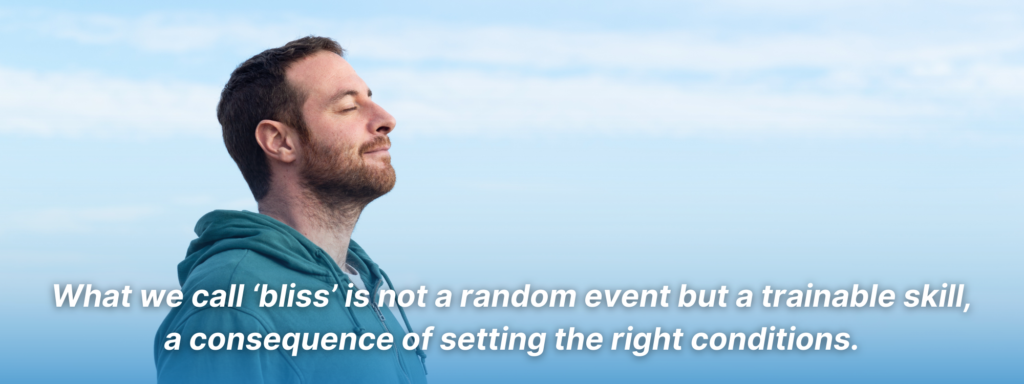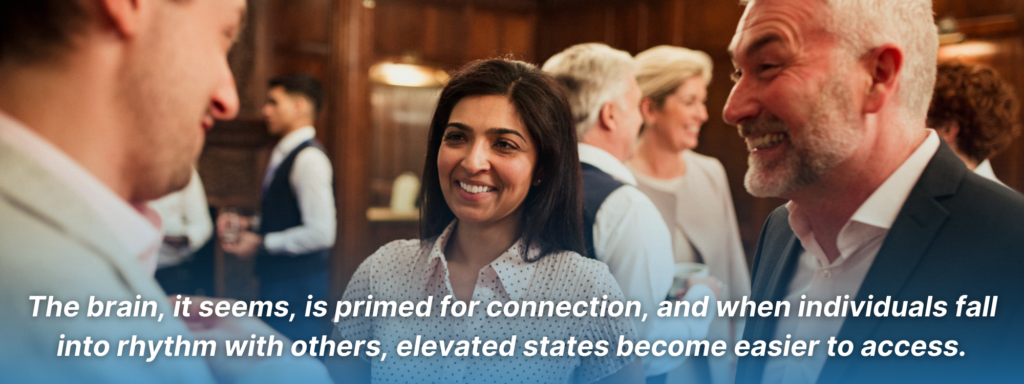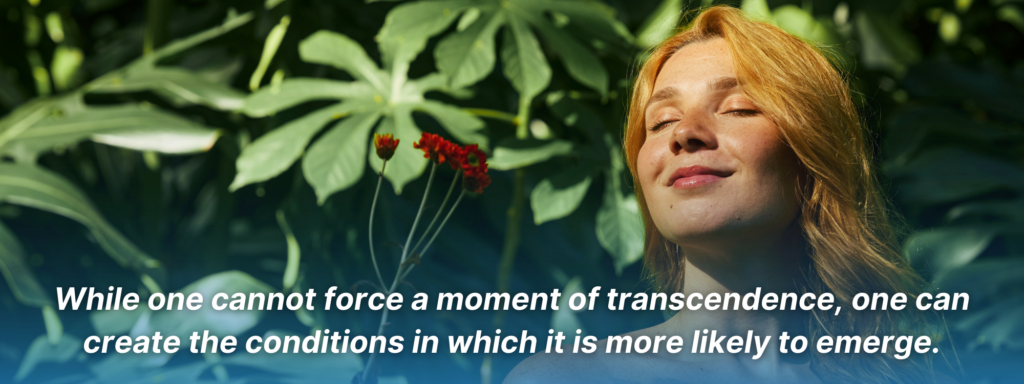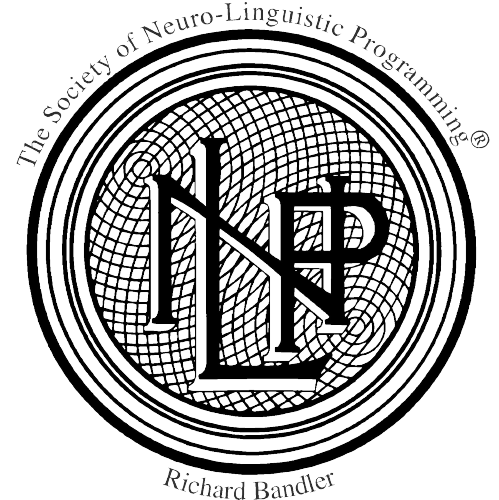Neuro-Elevation
There are moments in life when the world seems to pause. Not in the way that an awkward silence lingers, heavy and unwanted, but in the way that a symphony reaches its crescendo—a moment so absorbing that time itself seems to bend, stretched thin like gold leaf. Athletes speak of it as ‘the zone’, that rare state where exertion melts into effortlessness. Artists know it as inspiration, an almost supernatural clarity where ideas arrive fully formed.
Spiritual traditions, ancient and modern, have long described an ineffable rapture, a dissolving of self into something vast and luminous. These are not rare occurrences reserved for mystics, geniuses, or the chemically adventurous. These are experiences well within the human repertoire, though we often fail to recognise them as part of the same phenomenon—perhaps because cultural conditioning teaches us to compartmentalise them, because we lack precise language to describe them, or because scientific framing has traditionally dissected them into separate disciplines rather than seeing them as interconnected states.
What unites these states is not just their intensity, but their undeniable reality. People who have been there—whether in the grip of a musical performance, in the ecstatic abandon of dance, or in the quiet intimacy of deep connection—do not merely recall them as passing moods
They describe them as fundamentally different modes of being, as though for a fleeting moment, they were operating on a higher frequency of existence. And yet, despite their profound impact, these states remain curiously elusive. One does not simply decide to enter ‘the zone’ any more than one can force a perfect sunset.
But if these moments arrive unbidden, does that mean they are purely accidental? Or is there something deeper at work?

Cultivating the Unbidden
If neuro-elevated states were mere gifts from an indifferent universe, they would remain as mysterious as lightning strikes—brilliant, but uncontrollable. Yet history suggests otherwise. From the ritual dances of ancient shamans to the disciplined meditations of monks, from the meticulous warm-up routines of elite performers to the rhythmic cadences of prayer, human beings have long practised ways of invoking states beyond the everyday. The lesson is clear: while we may not command them at will, we are far from powerless in their pursuit.
Consider the phenomenon of ‘runner’s high’. To the uninitiated, it seems almost mythical: the idea that pain and exhaustion could suddenly transform into blissful euphoria. Yet seasoned runners will insist it is real, a tangible shift in consciousness that arrives only after the body has been pushed beyond its usual limits. The catch, of course, is that one must first endure the strain before reaping the reward. The same holds true in countless other domains. The poet wrestles with words until the poem writes itself. The musician struggles with the instrument until the music plays through them. The meditator sits with restless thoughts until stillness takes over. In each case, effort precedes transcendence.
This is where modern neuroscience, for all its complexities, aligns with the wisdom of tradition. Certain neurochemical signatures—endorphins, dopamine, serotonin—appear across a range of heightened states, from spiritual ecstasy to creative flow. But these chemicals do not appear spontaneously; they are responses to stimuli, shaped by intention, repetition, and context. What we call ‘bliss’ is not a random event but a trainable skill, a consequence of setting the right conditions
There is something liberating about this realisation. It suggests that the most extraordinary moments of life are not flukes, nor are they the exclusive domain of those who retreat from the world in pursuit of enlightenment. They are available to anyone willing to learn their rhythms, to engage with experience in a way that invites rather than demands, that coaxes rather than coerces
Just as the skilled sailor learns to read the winds rather than fight them, so too can we learn to recognise and ride the currents of heightened consciousness. Just as a sailor watches for subtle shifts in the breeze, feeling the pressure on the sails before making adjustments, we too can develop an awareness of the signals our mind and body send. Practices like breath control, structured movement, and attentional training serve as our instruments—tools that, when honed, allow us to catch the winds of neuro-elevation rather than be at their mercy. The question, then, is not whether these states exist, but how we might prepare ourselves to meet them when they arrive.

Social Elevation
To assume that these states are solitary affairs would be to miss an essential piece of the puzzle. While individuals may experience neuro-elevated states alone, they are most commonly—and most powerfully—found within a shared setting. Religious ceremonies, live concerts, synchronised dance, sporting events, even the simple act of laughter among friends—all of these have the power to generate and sustain states of collective transcendence.
The mechanism at play is neither mystical nor mysterious. Humans, after all, are social creatures, and our neural wiring reflects this: the same networks that govern our most intimate emotions—love, trust, joy—are activated when we move, sing, and experience together.
One need only observe a stadium in full roar, a congregation moved by a shared hymn, or the seamless improvisation of a jazz ensemble to recognise that something greater than the sum of its parts is taking place. Neuroscientists studying synchrony in group activities have found that when people engage in rhythmic, coordinated action, their brainwaves begin to harmonise—an effect that strengthens emotional bonding and heightens the sense of belonging.
This is not mere poetic speculation; it is an observable phenomenon. The brain, it seems, is primed for connection, and when individuals fall into rhythm with others, elevated states become easier to access.
If we accept that such experiences are not only real but enhanced by social context, then a fascinating implication arises: the ability to generate and sustain these states is not just an individual pursuit but a collective skill. This is evident in structured practices such as religious rituals, where synchronised chanting or prayer deepens shared experience; in team sports, where collective rhythm and mutual anticipation drive peak performance; and in group meditation, where aligned breath and focus create a shared resonance.
These are not accidental; they are consciously cultivated, reinforcing that neuro-elevated states thrive in environments of communal intention and practice. Just as a lone runner might struggle to reach a peak state without the energy of a race-day crowd, so too might an individual meditator find greater ease in a monastery or retreat centre. Context matters, and so does community.

Brain-Body-Bliss
If there is a paradox in pursuing neuro-elevated states, it is this: the harder one chases them, the more elusive they become. Like catching fireflies in a jar, grasp too tightly and they slip through your fingers. And yet, preparation is essential. While one cannot force a moment of transcendence, one can create the conditions in which it is more likely to emerge.
Across disciplines—spiritual, athletic, creative—the same preparatory principles appear time and again. Breath control, structured movement, sensory immersion, deliberate practice. The techniques vary, but the principle remains: the mind and body must be brought into a state of readiness.
Take music, for example. A pianist does not approach the keyboard with stiff fingers and expect a masterpiece to emerge. They warm up, letting muscle memory take over, creating a pathway for flow. The same holds true for speakers, dancers, even thinkers. Mental clarity and physiological readiness form the gateway through which these states are accessed.
For those seeking more deliberate access to these moments, the path is one of both discipline and surrender—like a dancer poised before the music begins, balanced between intention and instinct, prepared to move yet waiting for the rhythm to take over. Structure prepares the body; openness invites the mind. The conditions can be shaped, the invitation extended. And when the moment arrives, one need only step into it—perhaps all that is needed is a shift in how we prepare, training not just for effort, but for openness. In the end, our sublime mind is not something we must chase, but something we must learn to welcome.



